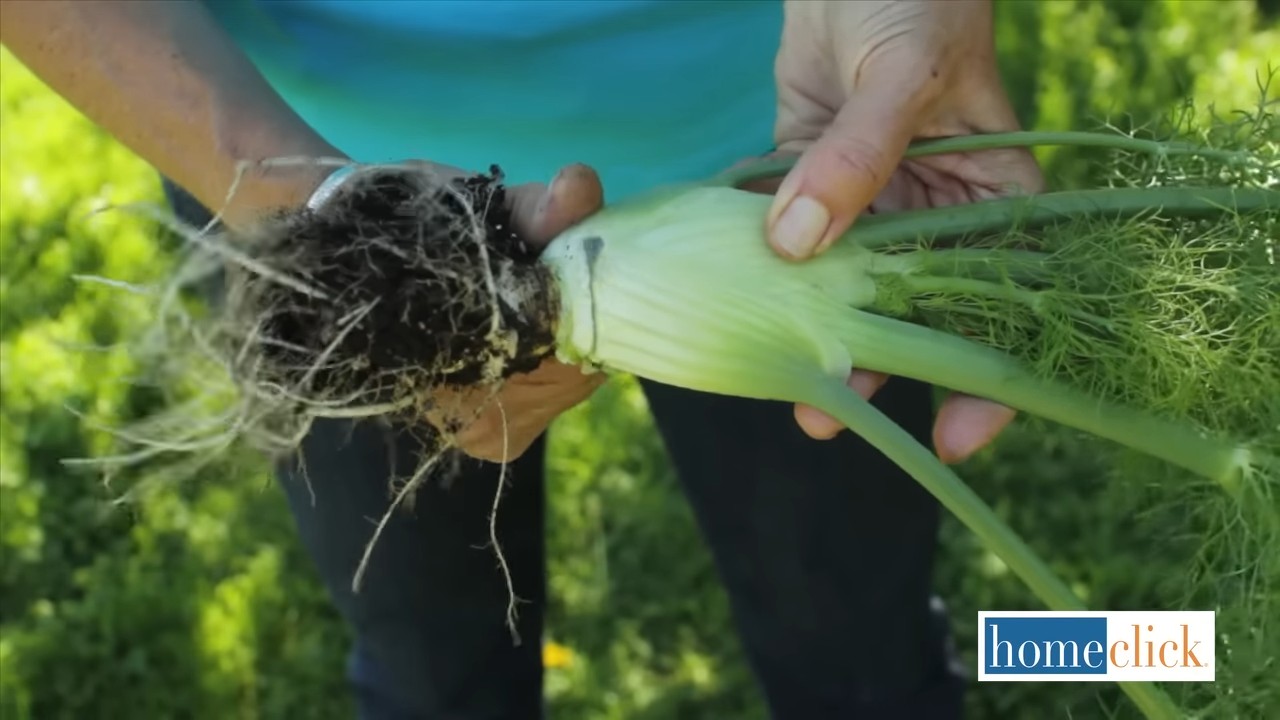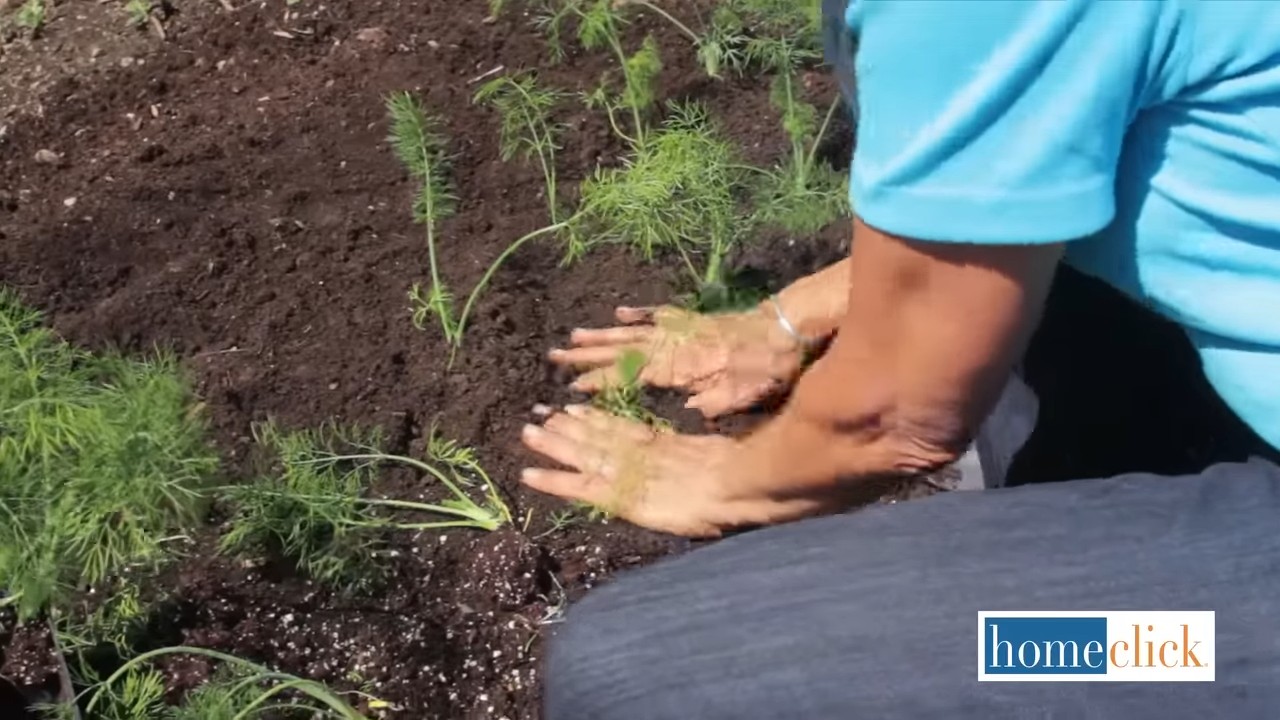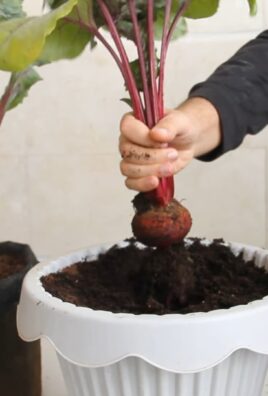Growing Fennel at Home can seem daunting, but trust me, with a few simple tricks, you’ll be harvesting this anise-flavored delight in no time! Have you ever dreamed of strolling through your own backyard, snipping fresh fennel fronds for a vibrant salad or plucking a plump bulb for a flavorful roast? Well, stop dreaming and start doing! This DIY guide is your passport to a thriving fennel patch, even if you’re a complete beginner.
Fennel has a rich history, dating back to ancient Greece and Rome, where it was prized for its medicinal properties and culinary uses. The Romans even believed it bestowed longevity! Today, fennel remains a staple in Mediterranean cuisine and is gaining popularity worldwide for its unique flavor and health benefits.
But why bother growing fennel at home? Simple! Store-bought fennel often lacks the freshness and intense flavor of homegrown varieties. Plus, you’ll have access to the entire plant – bulb, stalks, fronds, and seeds – each offering a unique culinary experience. More importantly, you’ll know exactly what’s going into your food, avoiding harmful pesticides and enjoying the satisfaction of nurturing your own food source. So, let’s dive into these easy DIY tricks and hacks that will transform your garden into a fennel paradise!

Growing Fennel at Home: A Beginner’s Guide
Okay, so you want to grow fennel at home? Awesome! It’s easier than you might think, and the fresh, anise-like flavor is totally worth it. I’ve been growing fennel for a few years now, and I’m excited to share my tips and tricks with you. Let’s get started!
Choosing Your Fennel Variety
First things first, you need to decide what kind of fennel you want to grow. There are two main types: bulb fennel (also called Florence fennel) and herb fennel.
* **Bulb Fennel:** This is the kind you see in the grocery store with the swollen, bulbous base. You can eat the bulb raw or cooked, and the fronds are also edible.
* **Herb Fennel:** This type is grown primarily for its feathery leaves and seeds. It doesn’t produce a large bulb.
For this guide, I’ll focus mainly on growing bulb fennel, but the general principles apply to herb fennel as well. Some popular bulb fennel varieties include ‘Zefa Fino’, ‘Rondo’, and ‘Victoria’.
Getting Started: Seeds or Transplants?
You have two options for starting your fennel: from seed or from transplants.
* **Seeds:** Starting from seed is the most economical option, and it gives you more control over the growing process. However, it takes a bit longer to get a harvest.
* **Transplants:** Buying transplants from a nursery is a quicker way to get started, but it can be more expensive. Make sure the transplants look healthy and aren’t root-bound.
I usually prefer to start from seed because I enjoy the whole process, but if you’re short on time, transplants are a great option.
Sowing Seeds Indoors (Optional)
If you live in a colder climate with a short growing season, you might want to start your fennel seeds indoors 4-6 weeks before the last expected frost.
1. **Prepare your seed starting mix:** Use a well-draining seed starting mix. I like to mix equal parts peat moss, vermiculite, and perlite.
2. **Sow the seeds:** Fill small pots or seed trays with the mix and sow the seeds about ¼ inch deep. Gently water the soil.
3. **Provide warmth and light:** Keep the soil moist and provide warmth (around 70°F). You can use a heat mat to speed up germination. Place the seedlings under grow lights or in a sunny window.
4. **Thin the seedlings:** Once the seedlings have a few true leaves, thin them out so that only one strong seedling remains in each pot.
Direct Sowing Outdoors
If you live in a warmer climate or have a longer growing season, you can direct sow your fennel seeds outdoors.
1. **Choose the right time:** Sow the seeds after the last expected frost in spring or early summer. You can also sow seeds in late summer for a fall harvest.
2. **Prepare the soil:** Choose a sunny spot with well-drained soil. Fennel prefers soil that is rich in organic matter. Amend the soil with compost or well-rotted manure before planting.
3. **Sow the seeds:** Sow the seeds about ¼ inch deep and 2-3 inches apart in rows that are 12-18 inches apart.
4. **Water gently:** Water the soil gently to avoid washing away the seeds.
5. **Thin the seedlings:** Once the seedlings emerge, thin them out to about 6-8 inches apart for bulb fennel and 12-18 inches apart for herb fennel.
Transplanting Seedlings
If you started your seeds indoors, you’ll need to transplant them outdoors once the weather warms up and the risk of frost has passed.
1. **Harden off the seedlings:** Before transplanting, gradually acclimate the seedlings to outdoor conditions by placing them outside for a few hours each day, increasing the time each day. This will help them adjust to the sun and wind.
2. **Prepare the planting site:** Choose a sunny spot with well-drained soil. Amend the soil with compost or well-rotted manure.
3. **Dig holes:** Dig holes that are slightly larger than the root balls of the seedlings.
4. **Transplant the seedlings:** Gently remove the seedlings from their pots and place them in the holes. Backfill with soil and water thoroughly. Space bulb fennel plants 6-8 inches apart and herb fennel plants 12-18 inches apart.
Caring for Your Fennel Plants
Once your fennel plants are established, they’re relatively easy to care for.
1. **Watering:** Water regularly, especially during dry periods. Fennel needs consistent moisture to thrive. Aim for about 1 inch of water per week.
2. **Fertilizing:** Fertilize every few weeks with a balanced fertilizer. I like to use a liquid fertilizer diluted to half strength.
3. **Weeding:** Keep the area around your fennel plants free of weeds. Weeds can compete with the fennel for nutrients and water.
4. **Hilling (for bulb fennel):** As the bulb starts to swell, hill soil around it to blanch it and make it more tender. This also protects the bulb from sunburn.
5. **Pest and Disease Control:** Fennel is generally pest-resistant, but it can be susceptible to aphids and slugs. You can control aphids with insecticidal soap or neem oil. Slugs can be controlled with slug bait or by handpicking them off the plants.
Harvesting Fennel
The time to harvest fennel depends on the type and variety you’re growing.
* **Bulb Fennel:** You can harvest the bulb when it reaches about the size of a tennis ball. To harvest, simply cut the bulb at the base with a sharp knife. You can also harvest the fronds at any time.
* **Herb Fennel:** You can harvest the fronds at any time. Simply snip off the leaves as needed. To harvest the seeds, allow the flower heads to dry on the plant. Then, cut off the flower heads and place them in a paper bag. Shake the bag to release the seeds.
Troubleshooting
Even with the best care, you might encounter some problems when growing fennel. Here are a few common issues and how to deal with them:
* **Bolting:** Bolting is when the plant prematurely flowers and goes to seed. This can happen if the weather is too hot or if the plant is stressed. To prevent bolting, choose a bolt-resistant variety and provide consistent moisture.
* **Yellowing Leaves:** Yellowing leaves can be a sign of nutrient deficiency or overwatering. Make sure you’re fertilizing regularly and that the soil is well-drained.
* **Pests:** As mentioned earlier, aphids and slugs can be a problem. Control them with appropriate methods.
Enjoying Your Harvest
Now for the best part: enjoying your homegrown fennel!
* **Bulb Fennel:** You can eat the bulb raw in salads, or you can cook it by grilling, roasting, or braising. The fronds can be used as a garnish or added to salads and soups.
* **Herb Fennel:** The fronds can be used to flavor fish, chicken, and vegetables. The seeds can be used as a spice in breads, sausages, and other dishes.
I love to roast fennel with olive oil, salt, and pepper. It’s a simple and delicious way to enjoy the flavor of this versatile vegetable. I also love to add fennel fronds to my salads for a burst of anise flavor.
Extending the Harvest
To extend your fennel harvest, you can succession plant. This means sowing seeds every few weeks so that you have a continuous supply of fennel throughout the growing season. You can also overwinter fennel in mild climates by mulching around the plants to protect them from frost.
Saving Seeds
If you want to save seeds from your fennel plants, allow the flower heads to dry on the plant. Then, cut off the flower heads and place them in a paper bag. Shake the bag to release the seeds. Store the seeds in a cool, dry place.
Final Thoughts
Growing fennel at home is a rewarding experience. With a little bit of care and attention, you can enjoy fresh, flavorful fennel all season long. Don’t be afraid to experiment and try different varieties. And most importantly, have fun! I hope this guide has been helpful. Happy gardening!

Conclusion
So, there you have it! Growing fennel at home is not only achievable, but it’s also a deeply rewarding experience that brings the fresh, anise-flavored goodness of this versatile herb and vegetable right to your fingertips. We’ve walked through the process, from selecting the right variety and preparing your garden to nurturing your plants and harvesting your bounty.
Why is this DIY trick a must-try? Because store-bought fennel simply can’t compare to the vibrant flavor and freshness of homegrown. Imagine the difference in your salads, soups, and roasted dishes when you’re using fennel that was harvested just moments before preparation. Plus, you’ll have the satisfaction of knowing exactly where your food came from and that it was grown without harmful pesticides or chemicals.
But the benefits extend beyond just flavor. Growing your own fennel connects you to the natural world, providing a calming and therapeutic activity. It’s a fantastic way to reduce your carbon footprint by minimizing transportation and packaging waste. And, let’s not forget the beautiful, feathery foliage that adds a touch of elegance to any garden.
Looking for variations? Consider these ideas:
* **Bronze Fennel:** For a visually stunning addition to your garden, try growing bronze fennel. Its dark, coppery foliage adds a dramatic contrast to other plants. The flavor is similar to green fennel, but with a slightly more intense anise note.
* **Fennel Pollen:** Don’t discard the flowers! Fennel pollen is a culinary treasure, offering an intensely aromatic and flavorful spice. Harvest the pollen by gently shaking the flower heads over a clean container.
* **Container Gardening:** If you have limited space, fennel can be successfully grown in containers. Choose a large pot (at least 12 inches in diameter) and ensure it has good drainage. Dwarf varieties are particularly well-suited for container gardening.
* **Companion Planting:** Fennel is known to attract beneficial insects like ladybugs and hoverflies, which can help control pests in your garden. However, it can also inhibit the growth of some plants, so be mindful of its placement. Avoid planting it near dill, tomatoes, beans, caraway, kohlrabi, and wormwood.
We encourage you to take the plunge and try growing fennel at home. It’s easier than you might think, and the rewards are well worth the effort. Don’t be afraid to experiment with different varieties and growing techniques to find what works best for you.
Most importantly, we want to hear about your experiences! Share your tips, successes, and challenges in the comments below. Let’s create a community of fennel enthusiasts and learn from each other. Happy gardening!
Frequently Asked Questions (FAQ)
1. What is the best time to plant fennel?
The best time to plant fennel depends on your climate. In warmer regions with mild winters, you can plant fennel in the fall for a spring harvest. In colder regions, it’s best to start seeds indoors 6-8 weeks before the last expected frost and transplant them outdoors after the danger of frost has passed. You can also direct sow seeds outdoors after the last frost, but be aware that germination may be slower. For bulb fennel, timing is crucial to avoid bolting (premature flowering) in hot weather. Aim to plant it so that it matures during cooler periods.
2. How much sunlight does fennel need?
Fennel thrives in full sun, requiring at least 6-8 hours of direct sunlight per day. Insufficient sunlight can result in leggy growth and reduced bulb size (for bulb fennel). Choose a location in your garden that receives ample sunlight throughout the day. If you’re growing fennel indoors, supplement with grow lights if necessary.
3. What kind of soil is best for growing fennel?
Fennel prefers well-drained, fertile soil with a slightly acidic to neutral pH (6.0-7.0). Amend your soil with compost or other organic matter to improve drainage and fertility. Avoid heavy clay soils, as they can become waterlogged and inhibit root growth. If you’re growing fennel in containers, use a high-quality potting mix.
4. How often should I water fennel?
Water fennel regularly, especially during dry periods. Keep the soil consistently moist, but avoid overwatering, which can lead to root rot. Water deeply when the top inch of soil feels dry to the touch. Mulching around the plants can help retain moisture and suppress weeds.
5. How do I prevent fennel from bolting?
Bolting (premature flowering) is a common problem with bulb fennel, especially in hot weather. To prevent bolting, choose bolt-resistant varieties, plant at the right time of year (so that it matures during cooler periods), and provide consistent moisture. Mulching can also help keep the soil cool. If your fennel does bolt, you can still harvest the leaves and seeds for culinary use.
6. When is fennel ready to harvest?
The harvesting time for fennel depends on whether you’re growing bulb fennel or herb fennel. For bulb fennel, harvest when the bulb reaches a desired size (usually 2-3 inches in diameter). For herb fennel, you can harvest the leaves at any time. Simply snip off the leaves as needed. Fennel seeds can be harvested when the flower heads turn brown and dry. Cut the flower heads and hang them upside down in a paper bag to dry. The seeds will fall out as they dry.
7. Is fennel a perennial or an annual?
Fennel is technically a short-lived perennial in warmer climates (zones 4-9), meaning it can live for more than two years. However, it is often grown as an annual, especially in colder regions where it may not survive the winter. Even in warmer climates, fennel may become less productive after a few years and is often replanted.
8. What are some common pests and diseases that affect fennel?
Fennel is generally resistant to pests and diseases, but it can be susceptible to aphids, slugs, and snails. Aphids can be controlled with insecticidal soap or by introducing beneficial insects like ladybugs. Slugs and snails can be handpicked or trapped. Root rot can occur in poorly drained soils. To prevent root rot, ensure your soil is well-drained and avoid overwatering.
9. Can I eat all parts of the fennel plant?
Yes, all parts of the fennel plant are edible, including the bulb, stalks, leaves, flowers, and seeds. The bulb is often eaten raw in salads or cooked in soups and stews. The stalks can be used like celery. The leaves are used as an herb to flavor various dishes. The flowers can be added to salads or used to make fennel pollen. The seeds are used as a spice.
10. How do I store fennel?
Store fennel bulbs in the refrigerator for up to a week. Wrap them loosely in plastic wrap or place them in a plastic bag. Fennel leaves can be stored in the refrigerator for a few days. Wrap them in a damp paper towel and place them in a plastic bag. Fennel seeds should be stored in an airtight container in a cool, dark place.




Leave a Comment